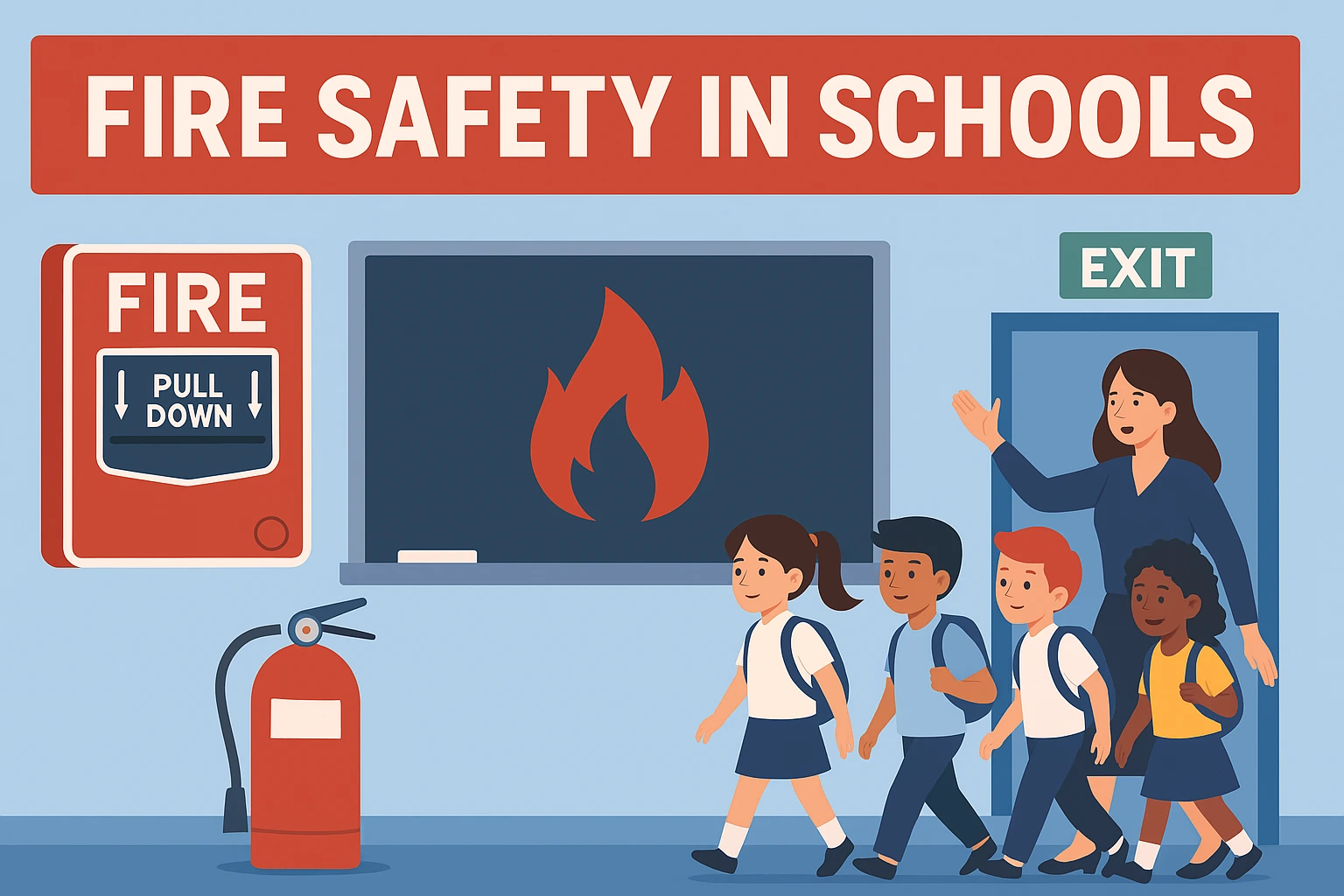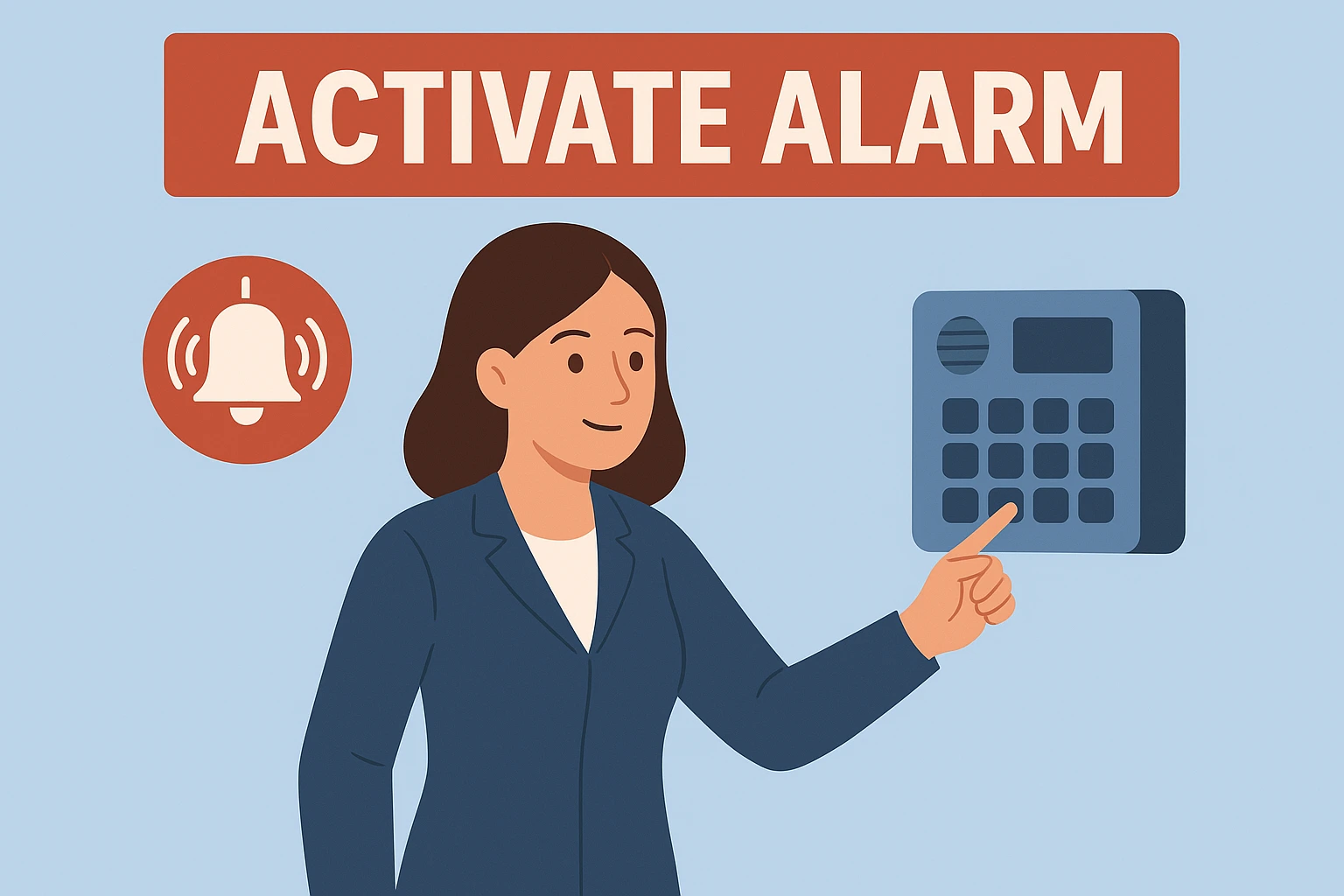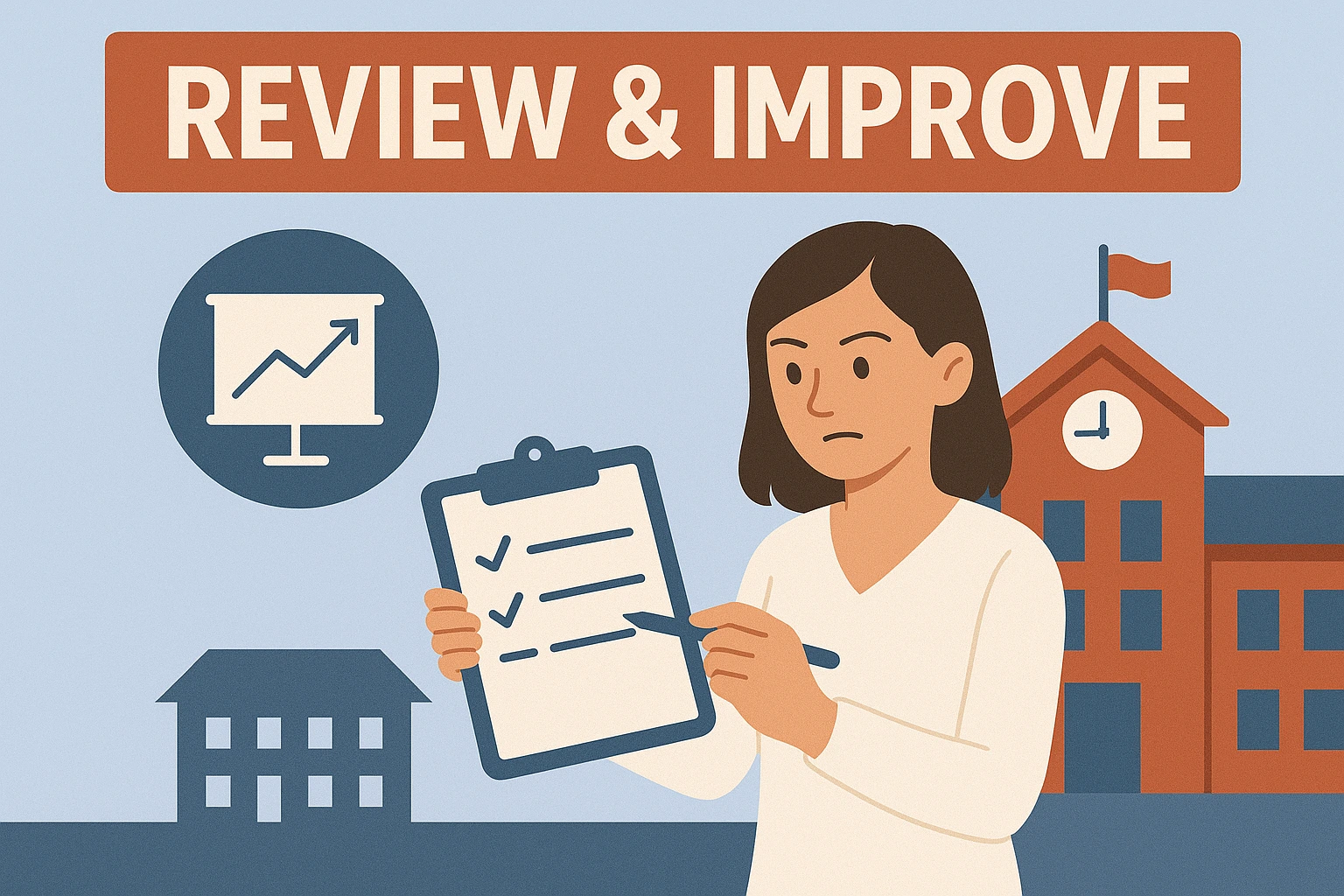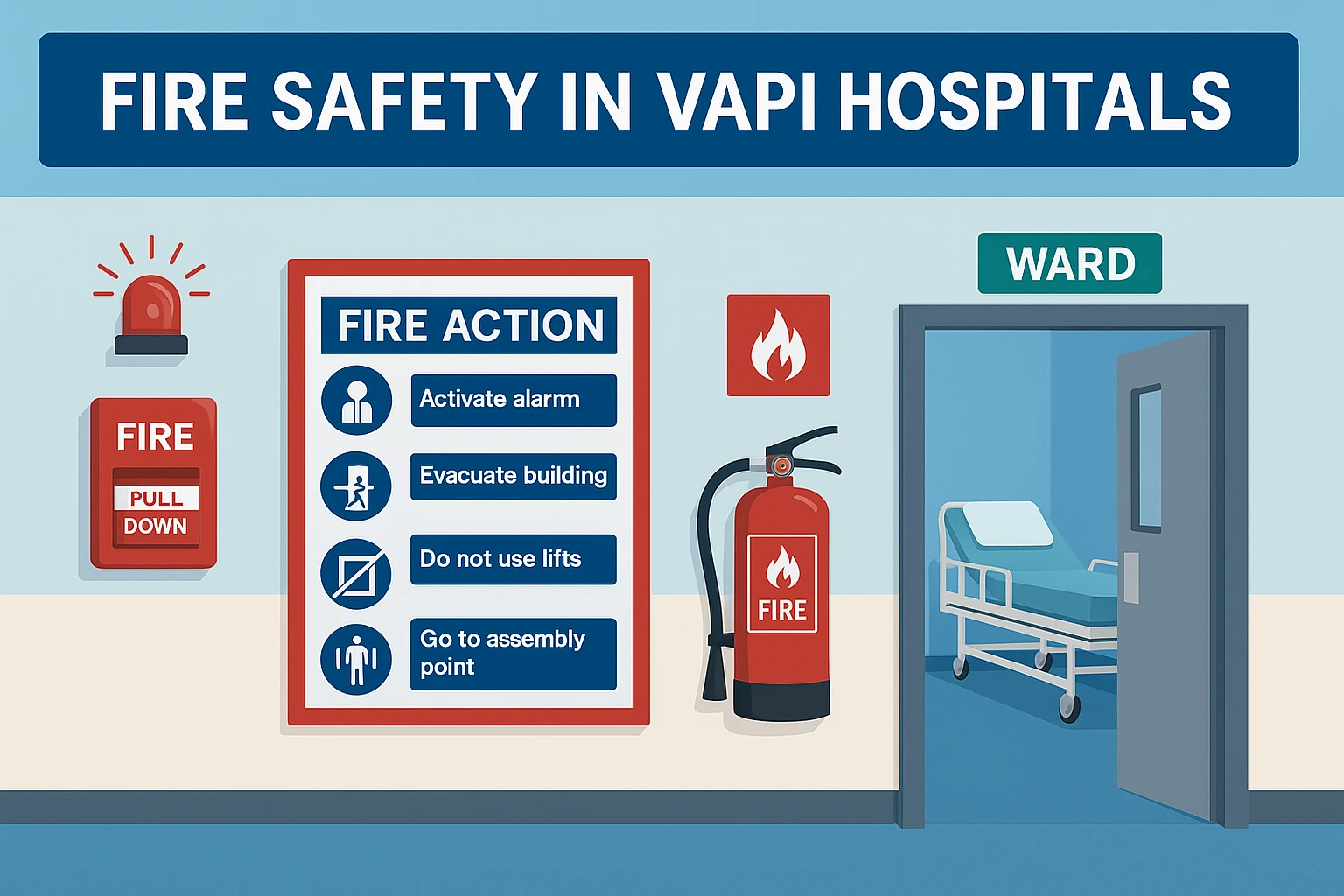Fire Safety Best Practices for Schools in Vapi
May 30, 2025

Table of Contents
Essential fire-safety guidelines for Vapi schools: detection, evacuation drills, extinguisher placement, and maintenance to protect students and staff.
Introduction
In Vapi’s bustling educational landscape, schools—from preschools to high schools—must implement comprehensive fire-safety programs. With dozens of young lives in classrooms, science labs, and assembly halls, any lapse in detection, evacuation planning, or equipment maintenance can turn a minor incident into a crisis. This post outlines the critical elements—early warning systems, student-friendly evacuation drills, strategic extinguisher placement, and rigorous maintenance schedules—every Vapi school needs to keep its community safe and comply with Gujarat’s fire-code standards.
1. Early Detection & Alarm Systems
Photoelectric Smoke Detectors: Install in corridors, libraries, and halls to catch smoldering fires.
Heat Sensors: Use rate-of-rise detectors in kitchens and labs to avoid steam-triggered false alarms.
Manual Call Points: Place “Fire – Pull Down” switches near exits for staff or older students.
Voice-Evacuation Panels: Pre-recorded, clear instructions in Gujarati and English.
2. Strategic Extinguisher Placement
ABC Dry-Powder Units: One 4 kg unit per 200 m² in classrooms and offices.
CO₂ Extinguishers: At computer labs and electrical rooms.
Foam Extinguishers: In art studios and cafeteria kitchens.
Visibility & Accessibility: Mount at 1.2 m height, with clear signage and unobstructed access.
3. Student-Friendly Evacuation Drills
Step-by-Step Evacuation Plans: Age-appropriate routes with assembly points marked in open fields.
Drill Frequency: Monthly classroom drills; quarterly full-school exercises.
Role Assignments: Designate teacher-leaders, student marshals, and first-aid helpers.
Debrief & Feedback: Record drill times, identify bottlenecks, and update plans.
4. Inspection, Testing & Maintenance
Daily Visual Checks: Teachers verify extinguisher seals and clear corridors.
Monthly Technical Tests: Alarm sound-checks, detector sensitivity tests.
Quarterly Sprinkler Flow-Tests: Confirm water-flow rates and valve operation.
Annual Full Audit: Conducted by an ISI-certified vendor (e.g., Munshi Fire Safety, Vapi) with a compliance report.
Featured Products
Fire Safety Equipment for Vapi Schools
Explore our IS 15683-certified solutions designed for educational settings:
- 4 kg ABC Extinguisher: Quick deployment in classrooms and offices.
- 2 kg CO₂ Unit: Safe for computer labs and electrical panels
- 6 L Foam Extinguisher: Ideal near kitchen and art areas.
- Wall-Mounted Alarm Call Point: “Fire – Pull Down” stations at every exit.
How to Conduct a School Fire Drill in Vapi
1. Plan & Notify

Establish a fire safety committee that includes staff, administration, and a fire safety vendor like Munshi Fire. Pick a suitable day, avoiding exams or major events. Notify all stakeholders: teachers, non-teaching staff, security, and even parents (if age-sensitive classes are involved). Coordination with local fire services is highly recommended in Vapi, especially in congested zones. Create a drill plan that clearly defines evacuation routes and individual responsibilities.
2. Activate Alarm

At the scheduled time, activate the school’s fire alarm system. Use this as a test of both the hardware (sirens, strobes) and the human response. Ensure the alarm is audible across all classrooms and areas like washrooms, labs, and playgrounds. Teachers must respond instantly, initiating the evacuation protocol while reassuring students to avoid panic. This step also helps identify coverage issues in older buildings in Vapi’s educational institutions.
3. Evacuate Students

Teachers should lead their classes to the designated assembly points using the safest and nearest exits. Avoid lifts and ensure special assistance for students with disabilities. Route maps should be posted in each room and reinforced during safety briefings. Conduct headcounts once classes reach their assembly area. Vapi schools with multiple floors should practice orderly descent to reduce stairway congestion.
4. Account & Assist

Once at the assembly point, class teachers and support staff must perform a headcount and report to the safety coordinator. Anyone missing should trigger an immediate escalation protocol. Assign first-aid personnel to assist students who may be stressed or injured during evacuation. Vapi schools with on-site nurses or infirmaries should integrate them into this phase. Maintain a checklist of students/staff who need additional care.
5. Review & Improve

After the drill, hold a debrief session with staff. Document what worked and where the system failed—confusion, slow response, blocked exits, inaudible alarms. Collect student feedback, especially from older grades, to improve realism. Update your school’s fire safety protocol based on this drill. Vapi schools should also ensure that records of drills are maintained for inspection by municipal and educational boards.
commonly asked questions
How often should schools in Vapi conduct fire drills?
Monthly classroom exercises and quarterly full-school drills ensure readiness.
Can students operate fire extinguishers?
Only older students under direct teacher supervision; focus on evacuation first.
Are passive fire-protection measures (doors, coatings) needed?
Yes—EI 60-rated doors and intumescent paints complement active systems.
Who certifies school fire-safety systems?
An ISI-certified company like Munshi Fire Safety, Vapi, issues compliance certificates.
What is the best type of extinguisher for schools?
ABC extinguishers are highly effective and suitable for use in school environments. Additionally, water mist extinguishers, which are pressurized water extinguishers, are an excellent option for areas containing sensitive equipment, such as those found in hospitals.
Admin
Fire Safety Expert
Stay Updated
Get the latest fire safety tips and news delivered to your inbox.


